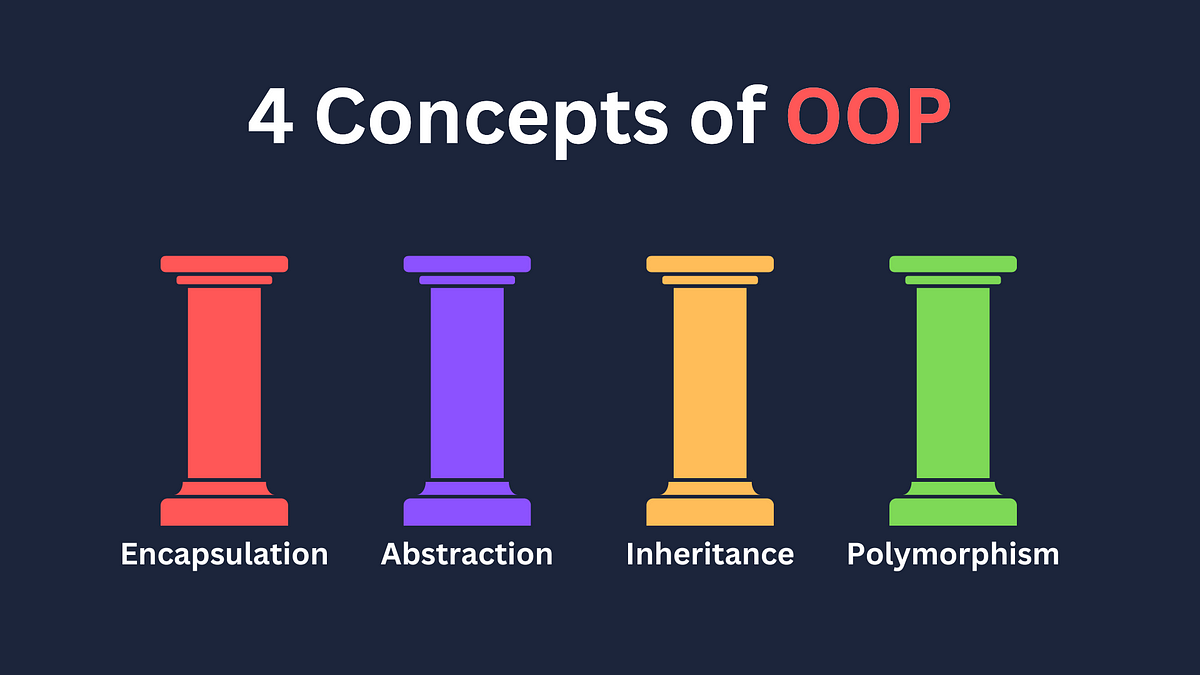"Most commonly asked question by interviewers"
 Aditya Gupta
Aditya Gupta
Hello everyone!
As we prepare for technical interviews, it's crucial to understand the four pillars of Object-Oriented Programming (OOP), as these concepts are frequently asked by interviewers. Here’s a brief overview and some key points you can use in your responses:
1. Encapsulation
Definition: Encapsulation is the bundling of data (attributes) and methods (functions) that operate on the data into a single unit, or class. It restricts direct access to some of the object's components and can prevent the accidental modification of data.
Key Points:
Achieved through access modifiers (public, private, protected).
Promotes data hiding and abstraction.
Example: Use getters and setters to control access to an object's properties.
2. Abstraction
Definition: Abstraction is the concept of hiding complex implementation details and showing only the essential features of an object. It simplifies the interface and reduces complexity.
Key Points:
Can be achieved using abstract classes and interfaces.
Allows the user to interact with the object without needing to understand the intricate details.
Example: A car’s interface (steering wheel, pedals) abstracts away the complexity of the engine and mechanics.
3. Inheritance
Definition: Inheritance is a mechanism where a new class (child class) derives properties and behavior (methods) from an existing class (parent class). This promotes code reusability and establishes a relationship between classes.
Key Points:
Supports the concept of "is-a" relationship.
Can be single, multiple, or multi-level inheritance, depending on the language.
Example: A
Dogclass can inherit from anAnimalclass, inheriting properties likespeciesand methods likeeat().
4. Polymorphism
Definition: Polymorphism allows methods to do different things based on the object it is acting upon, even when they share the same name. It can be achieved through method overriding and method overloading.
Key Points:
Supports method overriding (runtime polymorphism) and method overloading (compile-time polymorphism).
Enhances flexibility and extensibility of code.
Example: A
draw()method that behaves differently based on whether it is invoked on aCircleor aRectangleobject.
Feel free to ask questions or share your thoughts on these concepts! Good luck with your interview preparations!
Subscribe to my newsletter
Read articles from Aditya Gupta directly inside your inbox. Subscribe to the newsletter, and don't miss out.
Written by

Aditya Gupta
Aditya Gupta
Hello, everyone! My name is Aditya Gupta, and I'm thrilled to welcome you to my programming language blog and project. As a passionate web developer, I've dedicated myself to exploring the vast world of programming languages and sharing my knowledge with fellow enthusiasts like you. Through my blog, I aim to provide informative and engaging content that will help you navigate the intricacies of various programming languages, including Python, JavaScript, Java, and more. Additionally, I'm actively working on an exciting project that combines my expertise in web development and programming languages. Join me on this thrilling journey as we delve into the fascinating realm of code and unleash our creativity together. Let's write beautiful and functional programs that empower us to shape the digital landscape.